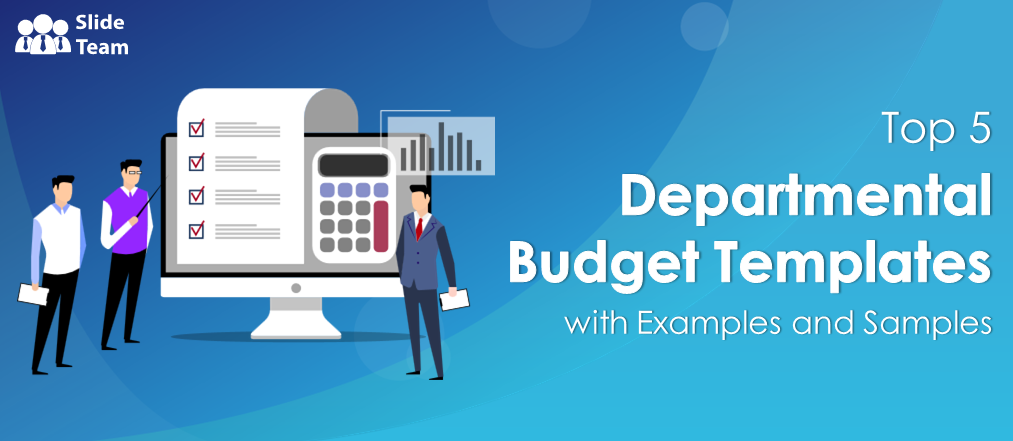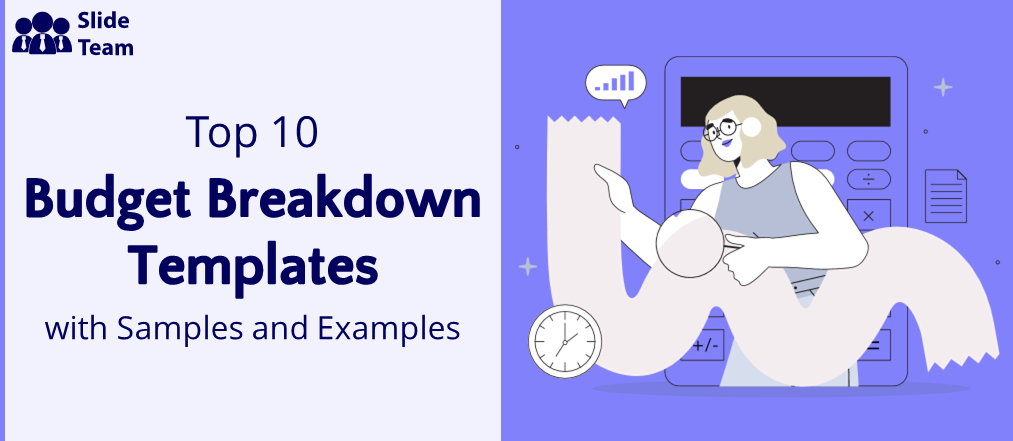Time is money; all businesses are aware of this adage. Yet, few can implement it by creating a budget to ensure their actions are always on time. The delicate balance between time and money must always be maintained, and a budget puts it in a concrete format.
A bi-fold weekly budget planner is one of the best ways to ensure the delicate balance is maintained between time, money, and activities that businesses use these essential resources for to ensure growth at a rapid pace.
No matter the industry, a day-by-day weekly budget planner will help you keep accurate and precise track of your finances. Now, where to get a weekly budget? Click here to access SlideTeam’s best-in-class, content-ready weekly budget templates.
The bi-fold nature of the weekly calendar templates ensures that these can be reduced to wallet-size and pocket-size and stored on your in-person. The primary tool is tables and pie charts to display the relationship between time, money, and speed of projects, as in the two templates illustrated below.
Each of the PPT templates is 100% editable and customizable.
The perfect combination of structure, design, and content, these PPT Templates help stamp your authority before stakeholders and audiences of diverse interests. The 100% customizable nature of the templates allows you to edit your presentations. The content-ready slides give you the much-needed structure.
Let’s explore these templates now!
Template 1: Project Details in Bi-Fold Weekly Budget Planner Summary Report
Budgets are planned and finalized based on time. This presentation template is a comprehensive document that helps businesses to plan for projects, like website development, in the bi-fold format with this; the first page lists the project name, the task completion date, and the overall status. The weekly task schedule divides this critical project into analysis, development, quality assurance, user acceptance, pre-production, etc. A five-week budget requirement/expense is also tabulated with the plan against the actual. The best businesses ensure they can do less with more; in this case, however, a budget overshoot needs to be avoided. Get this template now, and ease your life with this systematic and organized start to your projects.
Template 2: Task Descriptions in Bi-Fold Weekly Budget Planner Summary
On page 2 of the bifold presentation template, businesses can indulge in a deeper analysis of the tasks started on website development, as listed on page 1; (remember, this is a sample, you can customize each element). Each task is described in greater detail, with a pie chart giving you a visual description of the status of tasks in terms of on-track, delayed, and not started, with a color legend also in place. In this case, for instance, 68% of projects are completed. Finally, the bi-fold weekly budget calendar concludes with a Notes and To-Do-List, where you get a chance again to map any notes you take on tasks to a deadline. Download this hands-on, wonderful PPT Preset now.
TRACK YOUR BUDGET CLOSELY
Money is essential, and it is always better to have it in circulation and moving around to make it grow. Yet, a budget is a necessary money/fund management tool. Without a budget to guide you, it becomes virtually impossible to manage money, as you spend it without accounting, ensuring that your wastage will be high and savings will be nil. The weekly Bi-fold weekly budget planner presentation template for projects is an excellent way to start tracking money in a budget format. Download it now to create projects that work and deliver for you, helping you profit; the budget remains the unsung hero that ensures your money grows rather than shrinks.
P.S. If you are into healthcare business development, you must make a strong case for the model you foresee working. Experience will bear out that investors are still active in this space. They need to hear or see good ideas/business models that resolve a problem or address a specific pain point of the end consumer in the healthcare business. Get world-class pitch decks in healthcare with a click here.
P.S. Get your customers to stay with these hands-on dashboards that help you retain them using the analysis tips displayed. Click here to access the top 5 customer retention dashboard templates to ensure your customers are always delighted and give you a higher lifetime value.
FAQs on Bi-fold Weekly Budget Planner
What is a bi-fold weekly budget planner, and what does it include?
A bi-fold weekly budget planner helps you streamline your expenses in line with your earnings. It is a systematic record of the weekly budget. It comprises sections like earnings or income; the actual spending out of that income; the savings, if any, per week, the total expenses of the week, and any observations or thoughts to improve the weekly budget. The thing with a weekly budget is that the compressed time frame allows you to be in touch with the finances and change course if needed. Hence, financial distress is extremely unlikely if you diligently follow the weekly calendar.
What is the 50-30-20 rule of budgeting?
The 50-30-20 rule of budgeting deals with allocating funds into the three buckets of needs, wants, and savings. The idea is that needs like food, water, housing, shelter, and all other biological essentials must be given half of your earnings. Remember, here, that this is 50% of your budget pie. So, say there is a need for transport. If you earn a lot, you can satisfy this need using a personal car; if you acquire a limited amount, then you are much better off satisfying this need using public transport. Then, 30% of the budget is on wants like variety, novelty, and things that may not be needed but are wanted, like gold jewelry, better shoes, etc. Finally, as life is uncertain and income streams even more so. You must ensure you keep 20% of the income as savings for emergencies or the rainy day when you will need this amount to satisfy your needs.





 Customer Reviews
Customer Reviews



















